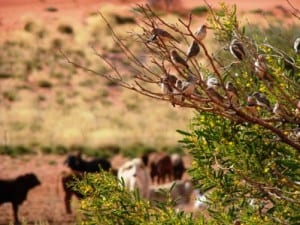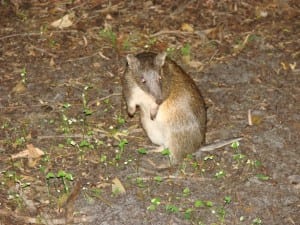How wild is that animal?
By Jack Ashby, on 14 April 2011
A delayed account of zoological fieldwork in Australia – Part 11
From April 2010 I spent about five months undertaking several zoological field projects across Australia. I worked with government agencies, universities and NGOs on conservation and ecology studies ranging from Tasmanian devil facial tumour disease, the effect of fire, rain and introduced predators on desert ecology and how to poison cats. This series of blog posts is a delayed account of my time in the field.
Weeks Twelve to Fifteen
After about three months of back-to-back field projects, I decided to take some time off and visit Tropical North Queensland with some friends for a few weeks. Unlike the majority of the field work we spent pretty much all of our time looking for wild animals without trapping them.
(more…)
 Close
Close




